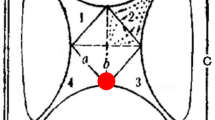Summary.
Females of the forest cockchafer, Melolontha hippocastani Fabr. (Coleoptera: Scarabaeidae, Melolonthinae), are known to produce toluquinone and 1,4-benzoquinone. The latter component has been shown in our earlier studies to act as a sex attractant that enhances synergistically the attraction of males towards plant volatiles induced by feeding females. Analyses of whole body extracts from adults and grubs (L3) of M. hippocastani by coupled gas chromatography—mass spectrometry revealed the presence of 1,4-benzoquinone and toluquinone also in males and larvae. Quantitative analyses showed that extracts from females contained significantly more of 1,4-benzoquinone and toluquinone than extracts from males. Remarkably, extracts from grubs contained significantly higher amounts of both compounds than extracts from females. Inhibition assays using Escherichia coli, Saccharomyces cerevisiae, and the entomopathogenic fungi Metarhizium anisopliae and Beauveria brongniartii revealed inhibitory effects of 1,4-benzoquinone and toluquinone against all tested microorganisms. However, the amounts necessary for inhibition of entomopathogenic fungi and S. cerevisiae in the laboratory assay were higher than those found in the extracts from M. hippocastani.
Similar content being viewed by others
Author information
Authors and Affiliations
Additional information
Received 5 March 2001; accepted 31 May 2001.
Rights and permissions
About this article
Cite this article
Ruther, J., Podsiadlowski, L. & Hilker, M. Quinones in cockchafers: additional function of a sex attractant as an antimicrobial agent. Chemoecology 11, 225–229 (2001). https://doi.org/10.1007/PL00001855
Issue Date:
DOI: https://doi.org/10.1007/PL00001855




